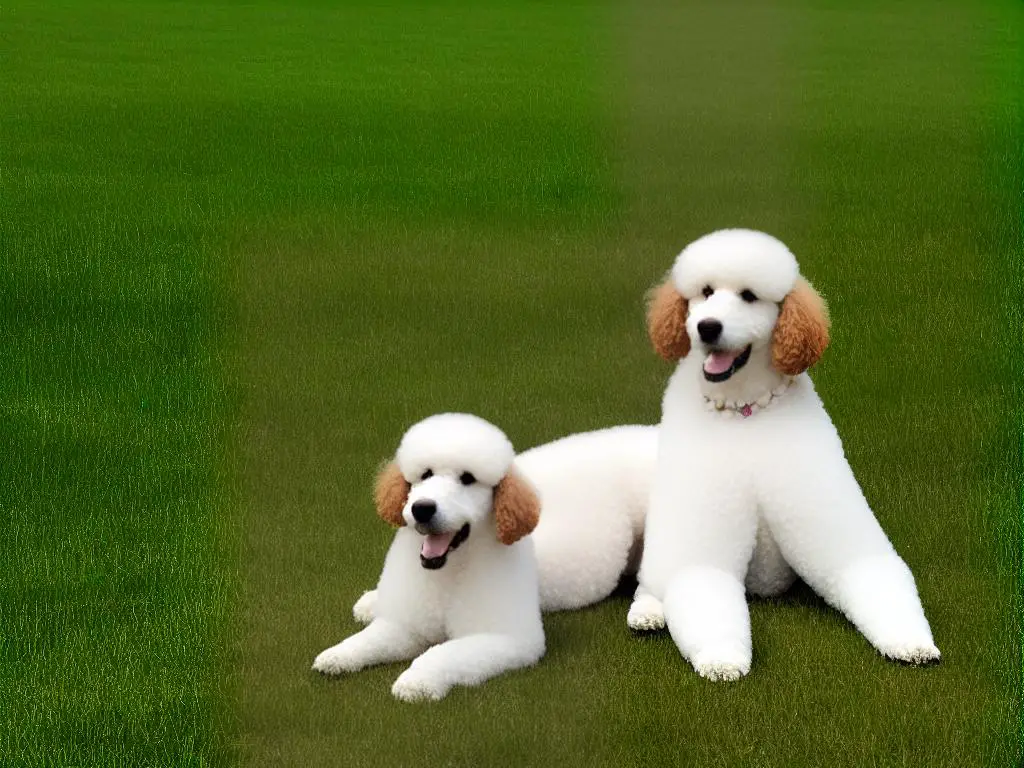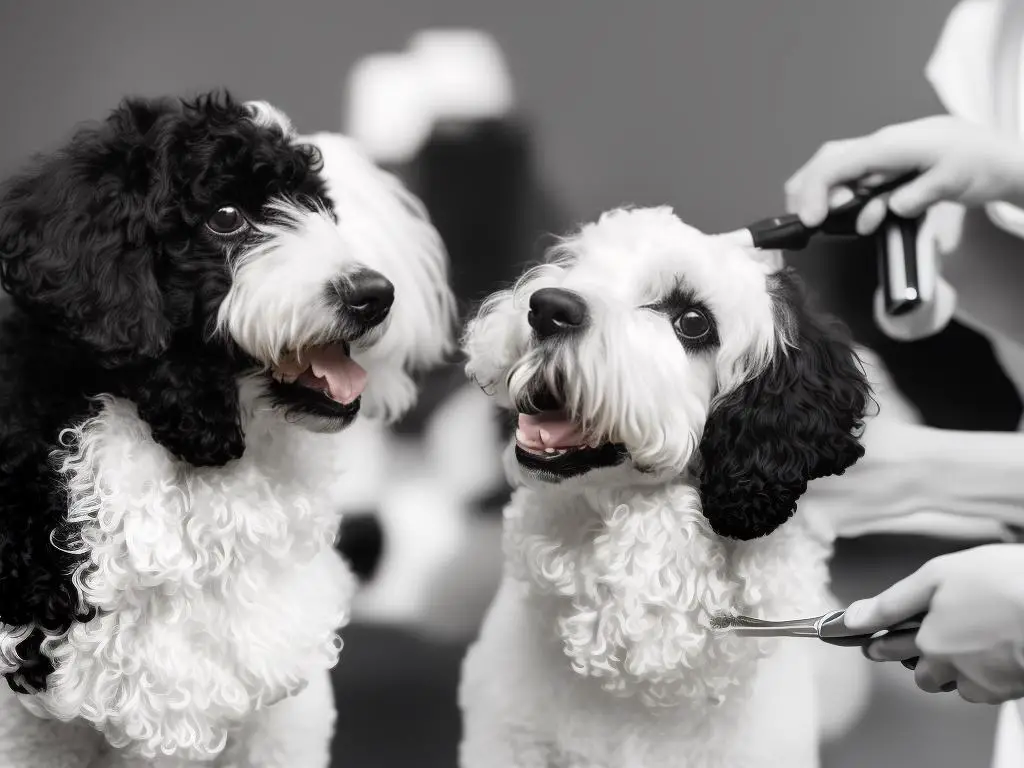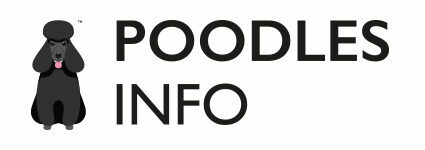Understanding Poodle Shedding: Causes & Solutions
For the poodle enthusiast or curious pet parent alike, understanding the intricacies of poodle shedding can provide valuable insights for maintaining their unique and luxurious coats. Poodles are known for their hypoallergenic properties, a result of their low shedding and unique fur growth cycle. However, there may be times when a poodle seems to shed more than usual, and various factors like health issues, hormonal changes, and diet can contribute to this. Through expanding our understanding of these beautiful creatures’ fur biology and shedding patterns, we can better care for their health and wellbeing.
Understanding Poodle Shedding
Understanding the Poodle’s Fur
Poodles have a unique fur composed of tight curls. Unlike most other dog breeds, poodles have hair, not fur. This hair can be curly, wavy, or corded and it grows much like human hair. The tight curl pattern of this hairwork as a barrier that holds shed hair in place, giving the impression that the poodle doesn’t shed. But like all dogs and humans, poodles do shed, just not in the same way or the same amount.
Poodles and Hypoallergenic Properties
Poodles are often considered a hypoallergenic breed. The term hypoallergenic refers to the fact that poodles produce fewer allergens than other dog breeds. One of the reasons for this is their unique hair. Since the curly hair traps dander and shed hair, less of it gets released into the environment.
However, it’s worth noting that no dog breed is completely hypoallergenic. Some poodles may still cause allergies to individuals sensitive to dog danders. Regular grooming and maintenance can help control the spread of allergens.
Stages of Poodle Fur Growth
The fur growth in poodles is categorized into three main phases: the anagen phase, the telogen phase, and the exogen phase. The anagen phase involves the growth of new hair, and this is the phase when most shedding occurs as new hair pushes out old one.
The telogen phase is a resting period where hair growth stops, but no shedding takes place. The exogen phase is the shedding phase, but because of the nature of poodle hair, the shedding is minimal and may not be easily noticed. Understanding these stages aids in understanding the shedding patterns of your poodle.
Frequency of Poodle Shedding
Poodles do shed but it’s a lot less noticeable compared to other dog breeds. The amount and frequency of poodle’s shedding depends on several factors. These include the poodle’s health, diet, age, and hormonal changes. Poodles that are unhealthy or stressed may shed more than usual.
It’s also worth noting that shedding may increase during certain seasons. For example, poodles might shed more during spring as they lose their winter coat. However, this significantly depends on the climate and the poodle individual nature.
As a poodle owner or enthusiast, it’s crucial to grasp the concept of poodle shedding. This knowledge is indispensable in making thoughtful care and grooming choices that contribute to the overall health and beauty of your poodle. Bear in mind that frequent grooming not only leaves your poodle looking exquisite but also sustains the hypoallergenic characteristics of their coat. This promotes a clean, allergen-free environment in your home.

Causes of Unusual Poodle Shedding
Despite poodles being famed for their hypoallergenic coats, they are not completely immune to shedding issues.
Compared to many other breeds, poodles do certainly shed less, thanks to their thick curls that usually trap the dead hairs, creating an illusion of a non-shedding breed. Nonetheless, when a poodle begins to shed excessively, it can indicate various problems that might be linked to their health, diet, or grooming habits.
The Impact of Health Conditions on Poodle Shedding
Firstly, health conditions such as allergies or hormonal imbalances can significantly affect the shedding of a poodle. Just like humans, dogs too can develop allergies from a wide variety of sources, including certain types of dog foods, environmental factors, or topical irritants. These allergies often manifest through skin conditions, resulting in hair loss, redness, and irritation. Additionally, hormonal imbalances, such as hypothyroidism or Cushing’s disease, can cause excessive shedding in poodles. Especially in female poodles, changes in hormone levels during heat cycles can also result in increased shedding. Thus, if your poodle is shedding more than usual, it’s crucial to consult with a vet to rule out health-related issues.
How Inadequate Diet Influences Poodle Shedding
The diet of a poodle plays an integral role in regulating their shedding. Dogs require a balanced diet with enough protein, vitamins, and minerals for a healthy coat. A low-quality diet with inadequate nutrients can lead to a dull, brittle coat that breaks and sheds more easily. Some common nutritional deficiencies that can result in increased shedding include lack of omega-3 fatty acids, Vitamin A, Vitamin B, and zinc in their food. Therefore, to keep your poodle’s shedding to a minimum, opt for high-quality, balanced dog food, and consider supplementing their diet with omega-3 fatty acids.
Grooming Practices and Poodle Shedding
Lastly, a poor grooming routine can lead to unusual poodle shedding. Unlike other breeds, poodles require regular grooming due to their dense curly hair. Without proper brushing, the dead hair and tangles can accumulate, leading to an unhealthy undercoat and increased shedding. It’s essential to brush your poodle frequently using the right tools to remove loose hairs and prevent matting.
Moreover, regular baths using a gentle, canine appropriate shampoo can help ensure a clean, healthy coat and keep shedding under control. But, don’t overdo the bathing as frequent washing can strip your poodle’s coat of natural oils, leading to dryness and excessive shedding.
Final Remarks
It’s typical for Poodles to shed to some extent. However, if the shedding tends to be excessive, it could be a sign of hidden problems needing your attention. Such problems can be health-related, connected to an unsuitable diet, or poor grooming habits. Always monitor your Poodle’s shedding patterns and don’t hesitate to seek a veterinarian’s advice if you observe sudden or notable shedding alterations. Bear in mind that early detection of the cause can aid in dealing with the issue and preserving your Poodle’s healthy, vibrant and curly coat.

Prevention and Solution for Poodle Shedding
Comprehending Poodle Shedding
Poodles are renowned for their distinguished and classy look, but are you aware that they too have shedding dilemmas? Indeed, similar to any dog, Poodles shed, and this can result in a cluttered habitat and potential family allergies. Luckily, there are steps you can employ to lessen and manage Poodle shedding.
Regardless of the breed, each dog sheds old or damaged fur. In the case of Poodles, the hair that is shed gets trapped in the surrounding curls, hence reducing the amount of loose hair visible around your home. But this doesn’t mean they are hypoallergenic or that they do not shed. When a Poodle is groomed or bathed, you will notice the loose hair coming out in clusters or balls, which may appear concerning. However, let it be known, this is altogether normal!
Ideal Grooming Techniques
Poodles require regular grooming to keep shedding under control. Ideally, they should be professionally groomed every 4 to 6 weeks, but in between appointments, you should brush them daily to remove tangles and loose fur. Use a slicker brush and a steel comb specifically made for Poodles, and make sure to penetrate all the layers of their coat without hurting their skin.
Poodles and Premium Nutrition
Diet plays a critical role in managing Poodle shedding. Ensuring that your Poodle is on a high-quality, balanced diet with essential fatty acids (Omega 3 and Omega 6), proteins, and vitamins helps promote a healthy and strong coat. Consider adding a supplement if necessary, but always consult your vet before doing so.
Health Concerns That Boost Shedding
A few health conditions might increase shedding in Poodles. Hypothyroidism, parasites, fungal infections, allergies, and other skin disorders might result in hair loss. Regular vet check-ups can help diagnose these conditions early, and prompt treatment can both resolve the health issue and reduce shedding.
The Role of Hydration in Poodle Shedding
Hydration is crucial for Poodles to keep their skin healthy and reduce shedding. Dry skin can lead to increased hair loss, so it is important to ensure your Poodle has access to fresh water at all times. Also, using a moisturizing shampoo during baths can help to maintain the hydration level of the skin and keep their furs healthy.
Importance of Regular Exercise
Your Poodle needs plenty of exercises to maintain overall good health which, in turn, can reduce shedding. Poodles are active dogs, so regular walks, fetch games, and agility training will help to keep them fit and maintain a healthy coat.
Conclusion
In conclusion, dealing with Poodle shedding involves a holistic approach that blends grooming, nutrition, hydration, exercise, and routine veterinary check-ups. While shedding is a normal process that cannot be completely stopped, these measures will ensure it is manageable and will not cause significant cleanliness or health issues. Remember that a healthy Poodle is a happy Poodle, and a happy Poodle will likely have less shedding.

To sum it up, adopting an informed approach to preventing and managing poodle shedding not only preserves the creature’s natural beauty but also significantly elevates their quality of life. Translating knowledge about the ideal diet, regular and appropriate grooming, along with staying alert about potential health issues, can mitigate unusual shedding scenarios. As poodle custodians, our ultimate goal should be to provide a comfortable environment for these loyal companions that allows them to flourish. When we prioritize their health and wellbeing in this way, we enhance our bonds with them, making the journey of sharing our lives with these incredible creatures that much more rewarding.
